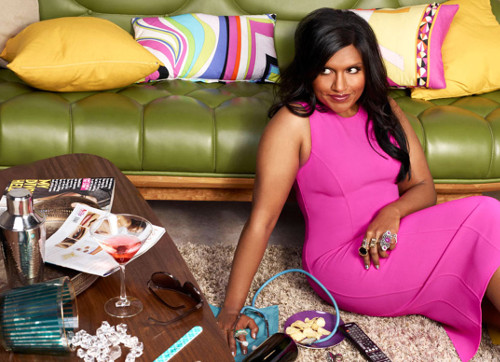
by Tanya Rawal
This post was originally published on Medium.com and republished with the author’s permission.
#StandWithJNU began trending on social media shortly after the arrest of Jawaharlal Nehru University Students’ Union president Kanhaiya Kumar. Like many of us across the globe, Kumar has a problem with capital punishment. Unlike most people, Kumar made the bold choice to stand before his peers and speak against the government’s 2013 decision to hang Afzal Guru.
In his speech, Kumar challenges national leaders to a debate on violence, religious freedom, and democracy. He also compares the current government to the British Raj and speaks on behalf of Guru.
Afzal Guru was accused of being a terrorist for his supposed involvement in the December 2001 attack on the Indian Parliament. The case against him was weak to the say the least; with insufficient evidence, police tampering, and a biased jury it is hard to jump on the anti-Guru bandwagon. But the media was successful in painting the Kashmiri man as a terrorist. And now, three years after the hanging of Guru, citizens concerned for the future of democracy in India continue to demand answers for his murder.
Earlier this week, Kumar led a group of students in their search for answers. “We are of this country and love the soil of India…We want to uphold our basic right, our constitutional right,” Kumar shouts to a large JNU crowd. But shortly after making this statement, Kumar was arrested for sedition in New Delhi on February 13, 2016. And every hour since more and more people are being told that Kumar, a Ph.D student, is “anti-national.”
But isn’t it anti-national to use a British law in post-independence India?
The Prevention of Seditious Meeting Act is a 1911 law introduced by the British Raj. With this law still in place it is, for example, still illegal to wear a Gandhi cap in an Indian prison.
This is not the first time a colonial law has been implemented in post-independence India. The Land Acquisition Act of 1894, which decriminalized the “provision of land” for any “scheme of development sponsored by the [British] government,” was revived and renamed by the Indian government in 2013. With the The Right to Fair Compensation and Transparency in Land Acquisition, Rehabilitation, and Resettlement Act (LARR) farmers can be dispossessed of their land in exchange for minimal compensations for the sake of “development.”
The British sedition law makes direct and violent threats to the established authority illegal, which makes sense for a colonial regime. But a sedition charge in a democratic state is illogical. A true democracy would welcome dissent. Kumar is being an ideal democratic citizen by practicing his right to dissent; he asks for a debate not a brawl. The anti-national language Kumar is accused of speaking does not undermine India as a nation.
Kumar’s words critique the cultures of corporate nationalism that the Narendra Modi administration is favoring over India: “[T]hey say that we are ruining the Indian culture. We want to ruin exploitation culture, racism culture, caste culture.”
So not only is the Modi administration witnessing the Rupee decline beyond reason, it also seems to be converting the ‘largest democracy in the world’ into the largest monarchy.
But what could Mindy do?
Mindy Kaling could speak up right now.
Or, as they say: Speak Up Or Pass The Mic, Mindy.
Three days after the arrest of Kumar, I learned three things during my morning scroll on the Internet (some things more important than others).
1. The police officers monitoring the protests at JNU were becoming more violent and media was excusing this violence by clinging to accusations of anti-nationalist speech.
2. The students and teachers of JNU were organizing a series of lectures to discuss democracy and the constitutional right to dissent.
3. “The Mindy Project” will resume its fourth season on April 12.
Saddened by the attack on free speech and unaware that “The Mindy Project” had even gone anywhere, I decided to go back to sleep that morning. But my mind was already haunted by the Internet and I ended up in a dream about Mindy…
[Read Related: Are Priyanka, Mindy and Aziz Competing With Each Other as South Asians on TV?]
In my dream, Mindy Lahiri was still in New York and she was still an OBGYN, but in this new episode, she was also troubled by the series of events at JNU. As my dream-episode progresses Mindy becomes enraged with the idea of taking away someone’s freedom of speech. And the moment she realizes that protesting capital punishment is just pro-human, Mindy begins to chant the words of JNU students.
“Release Comrade Kanhaiya!”
“Long Live JNU!”
“End Police Raj on Campus!”
“Smash Fascism!”
When I woke up, I knew this dream of mine would never come true. Life as we know it would never be the same if a character like Mindy Lahiri went rogue and talked about something other than failed relationships, living fabulously in New York, and the perks of having an amazing wardrobe. Mandy Kaling’s character erases questions of ethnicity and race by combining all of the “Sex and the City” characters into one upper-class model minority figure. For Mindy, Indian culture is not an identity, it is an accessory (like it is for most Americans). And her familiar penchant for shoes and men makes her white audience comfortable.
I want someone to make me comfortable.
For Mindy to make me comfortable, she would have to remember that she is, in fact, Indian and a woman. But, as she stated in a 2011 interview with Vanity Fair, she forgets she is both:
“I used to forget that I was an Indian woman…I would even forget that I was a woman.”
And to be Indian right now, either in India or abroad, it is your duty to do something about the Modi administration’s willingness to undermine democracy as is evidenced by the arrest of Kanhaiya Kumar.
I know I was not the only one to turn to “The Mindy Project” in search of an ally when the show first aired in 2012. After years of turning to Queen Latifah, Tisha Campbell-Martin, Janet Hubert, and Phylicia Rashad, I was excited to add an Indian woman to my list of television stars! But Mindy let me down when she picked up the mic just to distance herself from India and get “a little Downton Abbey” at times. Now, four years after “The Mindy Project” aired, and a few weeks after the release of Beyonce’s “Formation,” I am even more desperate for someone to perform my politics.
Me and my woes need a theme song!
And as Nina Simone reminds us, “it is an artist’s duty to reflect the times.” And it would be nice to have an artist with 2.1 million followers on Instagram and 6.53 million followers Twitter reflect the times of the 3.4 million South Asians in the United States.
I hope Mindy can remember she is an Indian woman. Her individual freedom to forget that she is brown and a woman is the result of several thousands of people coming together to remind the world of their human rights.
The #StandWithJNU protests is another moment in history that remind us of our obligation to speak truth to power…speaking truth to power is the one thing we owe each other in a democracy. And to those of you that don’t have to scream as loud as the rest of us: it is annoying when you choose to stay silent.
 Tanya Rawal is currently teaching in the Department of Philosophy at California State University, Los Angeles. Her research focuses on creditor-debtor relationships in India, Italy, and the United States. Rawal is also the founder of the Saree, Not Sorry movement.
Tanya Rawal is currently teaching in the Department of Philosophy at California State University, Los Angeles. Her research focuses on creditor-debtor relationships in India, Italy, and the United States. Rawal is also the founder of the Saree, Not Sorry movement.




